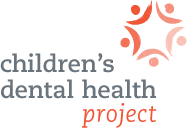Health Care Reform Appropriations Talking Points
While advocates should be pleased to see the attention paid to oral health by the appropriations committees thus far, many essential oral health provisions are being left off the table for FY 2011. The oral health provisions in Affordable Care Act (ACA) are necessary to effectively support the pediatric dental benefit and enhance existing oral health infrastructure.
It is important that advocates continue to put pressure on their representatives so that every new oral health program receives the seed money necessary to make an impact. When speaking with your representatives, we encourage you to use the following talking points adapted from the sign-on letter sent to Senator Harkin and Congressman Obey in May:
General ACA Oral Health Information
- Benefit: Thank you for passing a bill with a strong dental benefit. Although dental caries (tooth decay) is preventable, it remains the #1 chronic disease in childhood. Making the commitment in ACA to ensure that all children receive dental coverage through medical and stand-alone plans in the exchanges is a necessary step in the right direction.
- Funding other ACA provisions: Almost 20 additional oral health provisions in ACA need funding. These essential provisions dealing with access, prevention, infrastructure, training, and research are essential in supporting the dental benefit and create a system-wide change to end childhood tooth decay.
Prevention
- Message of Prevention: Dental caries, the disease that causes cavities, is an infectious, transmittable, but preventable disease. By focusing on prevention, thousands of lost school days and millions of dollars can be saved. Low-income children who have their first preventive dental visit by age one are not only less likely to need subsequent restorative or emergency room visits, but their average dentally related costs are reduced by almost 40%.
- CDC Oral Health Prevention Public Education Campaign ($5 million): Public education is a broad reaching and inexpensive strategy to minimize tooth decay similar to what has been done to address other chronic diseases (such as diabetes and heart disease). This campaign will focus on promoting good oral health among those who stand to benefit most, especially children, pregnant women, and underserved and at risk populations.
- Dental Caries Disease Management grants ($8 million): Dental caries is entirely a manageable disease. However, unlike many other chronic conditions like diabetes and cardiovascular disease dental treatment lags far behind in utilizing effective disease management. These grants will help demonstrate how to close the knowledge gap among insurers, health professionals, and communities, so they can invest earlier, smarter, and with more targeted interventions.
- School-based Dental Sealants Program ($15 million): Among high-risk children, sealants applied to permanent molars have been shown to avert tooth decay over an average of 5-7 years. Funding for this program will allow for the effective targeting of schools with large numbers of underserved children across the nation.
Infrastructure
- CDC Oral Health Infrastructure grants ($25 million): In order to effectively address the oral health needs of communities, there needs to be leadership and a strong infrastructure in place. CDC's investment in a limited number of states has proven incredibly effective to date and must be expanded to all 50 states for communities to fully benefit from federal support related to program guidance, surveillance and above all, building a more efficient oral health delivery system at every level.
Workforce
ACA significantly expands Medicaid, which will undoubtedly add new challenges to the existing dental workforce. There simply are not enough dental professionals, particularly in rural and impoverished areas, The workforce provisions in ACA aim to meet the increasing need.
- Alternative Provider Demonstration grants ($15 million): In addition to investing in the current workforce, ACA supports states that want to expand their dental workforce, specifically by training or employing new mid-level dental providers. This provision is targeted at supporting underserved communities.
- Primary Care Training Programs ($30 million): Expanded funding for primary care training program is yet another strategy to addressing the maldistribution and shortage of dental providers in the country. Providing training and loan forgiveness to serve in shortage areas will provide immediate care in communities in addition to a long-term investment in a future workforce with the knowledge and skills to serve the underserved.
Surveillance & Monitoring
- National Oral Health Surveillance ($5 million): In order to adequately address the oral health needs, data collection is necessary to measure the current status in addition to identifying any measurable changes. Multiple federal data and surveillance systems provide the full oral health picture including pregnant women and at-risk populations is integrated into the Pregnancy Risk Assessment Monitoring System (PRAMS), the National Health and Nutrition Examination Survey (NHANES), the Medical Expenditures Panel Survey (MEPS) and the National Oral Health Surveillance System.
